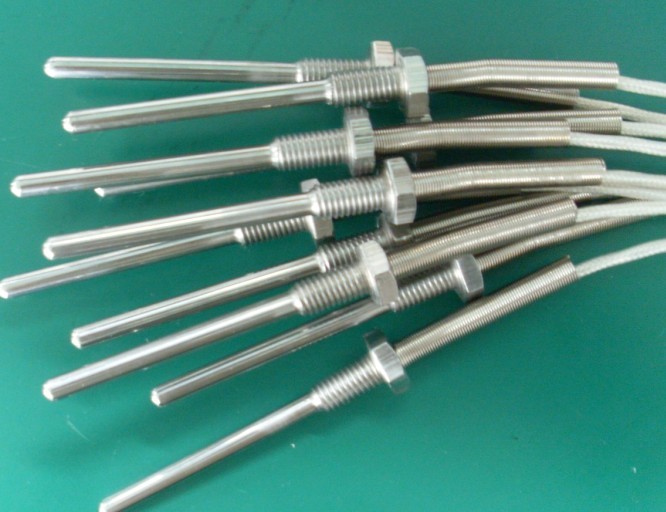Pt100 thermal resistance temperature measurement principle:
Pt100 is platinum thermal resistance, and its resistance is proportional to the temperature change. The relationship between the resistance of Pt100 and the temperature change is: When the temperature of Pt100 is 0°C, its resistance is 100 ohms, and its resistance is about 138.5 ohms at 100°C. Its industrial principle: When the PT100 is at 0 degrees Celsius, its resistance is 100 ohms, and its resistance will increase at a constant rate as the temperature rises.
The resistance value and temperature of a metal thermal resistor can generally be expressed by the following approximate relationship:
Rt=Rt0[1+α(t-t0)]
In the formula, Rt is the resistance value at temperature t; Rt0 is the corresponding resistance value when temperature t0 (usually t0=0°C); α is the temperature coefficient. The relationship between resistance and temperature of semiconductor thermistors is
Rt=AeB/t
Where Rt is the resistance at temperature t; A, B depends on the constant of the structure of the semiconductor material.
In comparison, the temperature coefficient of the thermistor is larger, the resistance value at room temperature is higher (usually more than thousands of euros), but the interchangeability is poor, the nonlinearity is serious, the temperature range is only -50 ~ 300 °C Around, a large number of home appliances and automotive temperature detection and control. Metal thermal resistance is generally applied to the temperature measurement in the range of -200~500°C. It is characterized by accurate measurement, good stability, reliable performance, and extremely wide application in process control.
Industrial metal thermal resistance
Judging from the change in resistance with temperature, most metal conductors have this property, but not all of them can be used as a temperature-measurement thermistor. As a metal material of a thermal resistor, general requirements are as follows: Largest and stable temperature coefficient, resistivity To be large (reducing the size of the sensor with the same sensitivity), stable chemical physical properties in the used temperature range, good material reproducibility, and resistance value with temperature have a function of the value (preferably a linear relationship ). The resistance value of the conductor changes with the change of temperature, and the temperature of the measured object is calculated by measuring its resistance value.
Temperature Sensor
The sensor is a resistance temperature sensor. This sensor is mainly used for temperature measurement in the temperature range of -200-500°C. Pure metal is the main manufacturing material of thermal resistance, and the material of thermal resistance should have the following characteristics:
1 The temperature coefficient of the resistor should be large and stable, and there should be a good linear relationship between the resistance value and the temperature.
2 high resistivity, small heat capacity, fast response.
3 The reproducibility and craftsmanship of the material are good and the price is low. Thermistor temperature characteristics
4 The chemical and physical properties are stable within the temperature range.
At present, the most widely used platinum and copper in the industry, and has been made into standard temperature resistance thermal resistance.

Paste Box Glue,Low Temperature Resistant,Cardboard Pasting Glue,Cold Glue
Hetrun Industry Group Limited , https://www.hetrunindustry.com